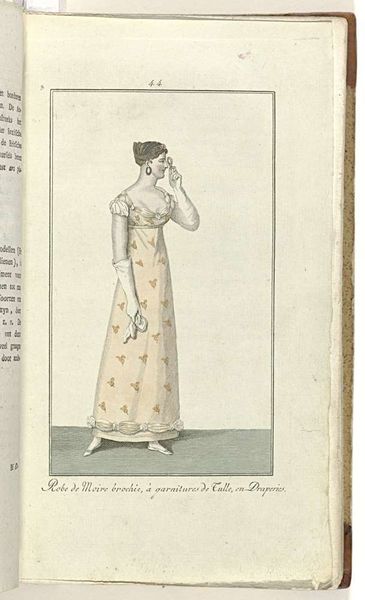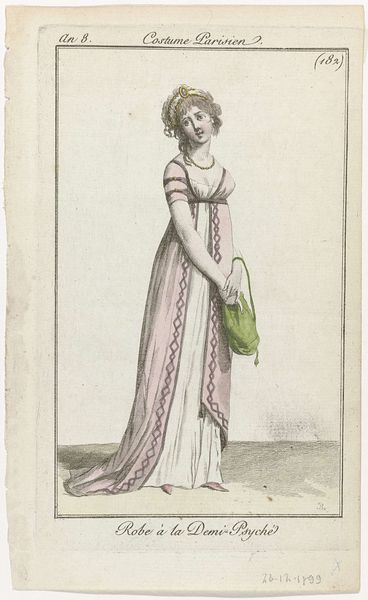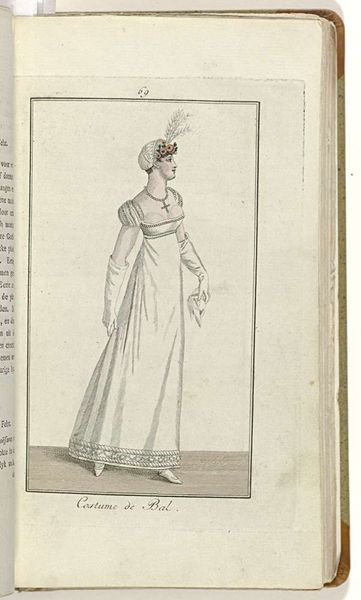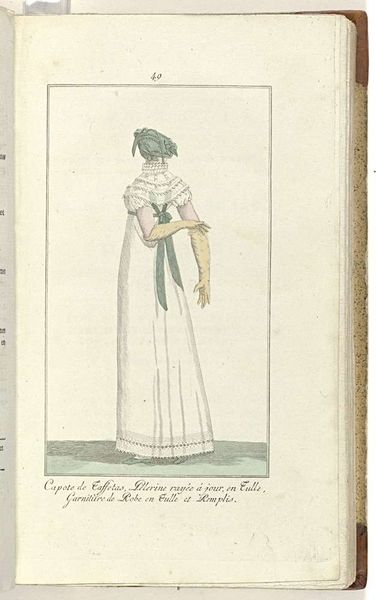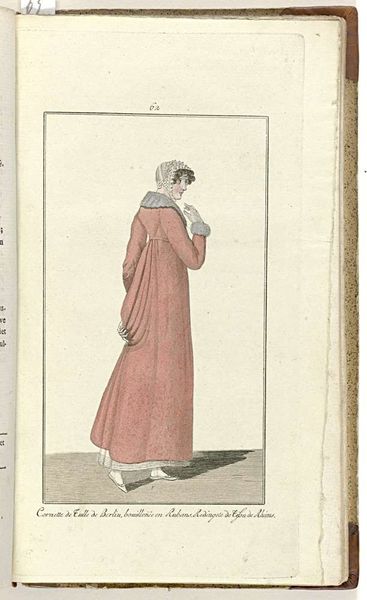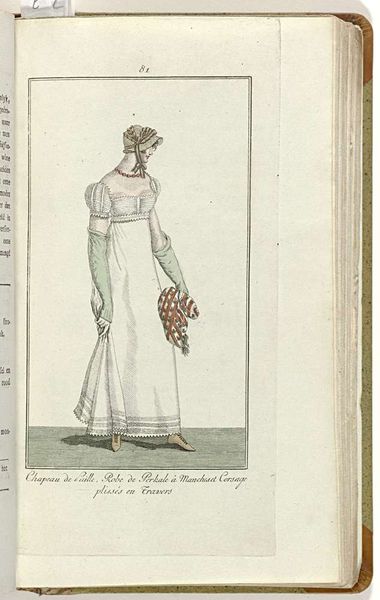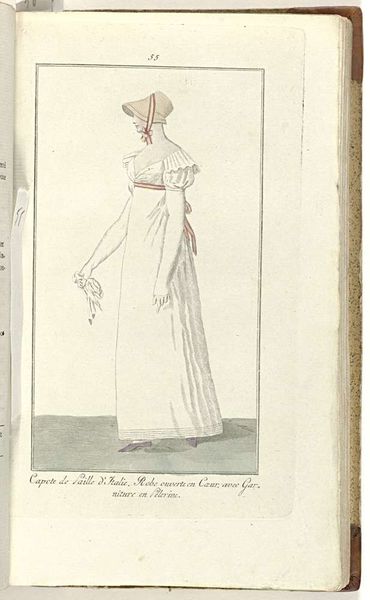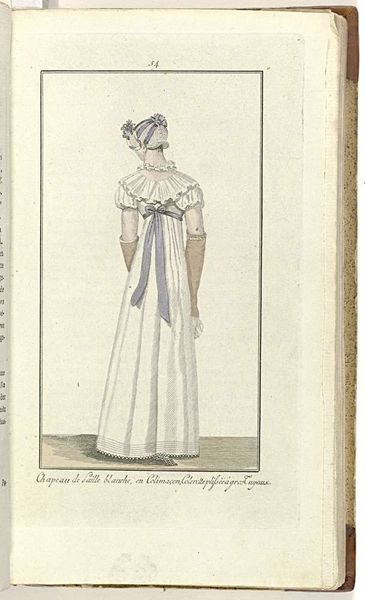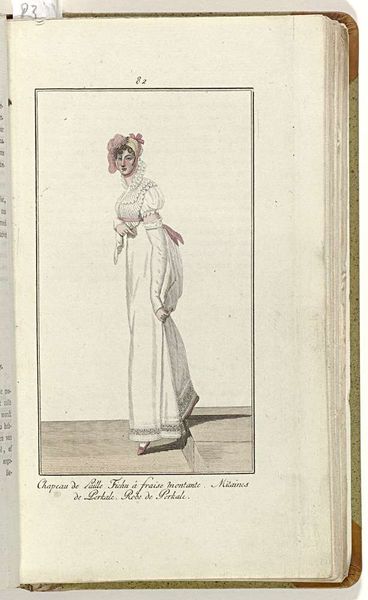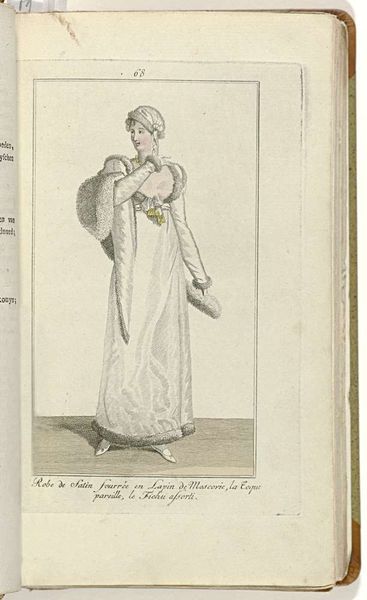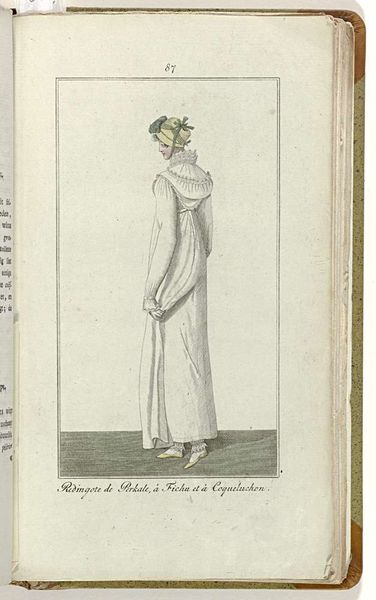
Elegantia, of tijdschrift van mode, luxe en smaak voor dames, Februari 1808, No. 35: Coeffure Grecque... 1808
0:00
0:00
anonymous
Rijksmuseum
print, engraving
#
portrait
#
neoclacissism
# print
#
genre-painting
#
dress
#
engraving
Dimensions: height 218 mm, width 120 mm
Copyright: Rijks Museum: Open Domain
Editor: Here we have a print titled "Elegantia, of tijdschrift van mode, luxe en smaak voor dames, Februari 1808, No. 35: Coeffure Grecque…" from 1808. It's attributed to an anonymous artist and currently housed in the Rijksmuseum. The neoclassical aesthetic really strikes me. What historical contexts informed this period’s fascination with, say, the ‘Greek coiffure’ presented? Curator: Well, the late 18th and early 19th centuries witnessed a surge of Neoclassicism, profoundly influencing fashion, art, and even politics. It reflects an era of revolutions - American, French - where societies looked back to the perceived democratic ideals and aesthetic purity of ancient Greece and Rome as a contrast to aristocratic excess. Editor: So, how did these socio-political ideals then influence popular imagery and artistic representation of women, specifically? Curator: The "Coeffure Grecque" and similar styles weren’t just about replicating ancient hairstyles. The simple, flowing gowns, high waists, and less restrictive silhouettes visible in the print were seen as emblems of liberty and a rejection of the elaborate, corseted styles of the ancien régime. The popularization of this ‘Grecian’ look in fashion plates like these contributed to shaping a new, ‘republican’ ideal of womanhood—a more ‘natural,’ less overtly ornamented image for public consumption. But remember, it was also a status symbol, accessible primarily to the affluent. Do you notice anything about who might be viewing this image? Editor: Right, it's presented as a luxury item in a fashion magazine. The elite are consuming even the "republican" look. It makes me think about how fashion continuously adapts to express ideology and wealth at the same time. Curator: Exactly! This seemingly simple print reveals so much about the complex interplay of aesthetics, politics, and social status in the early 19th century. This was a refreshing exchange. Editor: Absolutely. Seeing art as a reflection of wider social shifts adds layers to my appreciation of this piece.
Comments
No comments
Be the first to comment and join the conversation on the ultimate creative platform.

